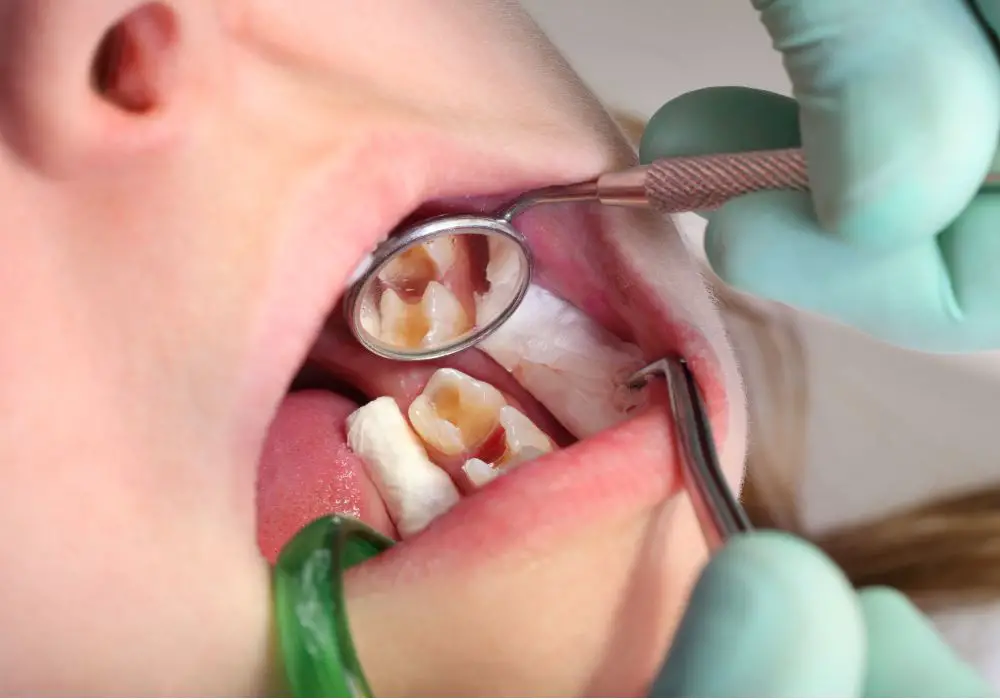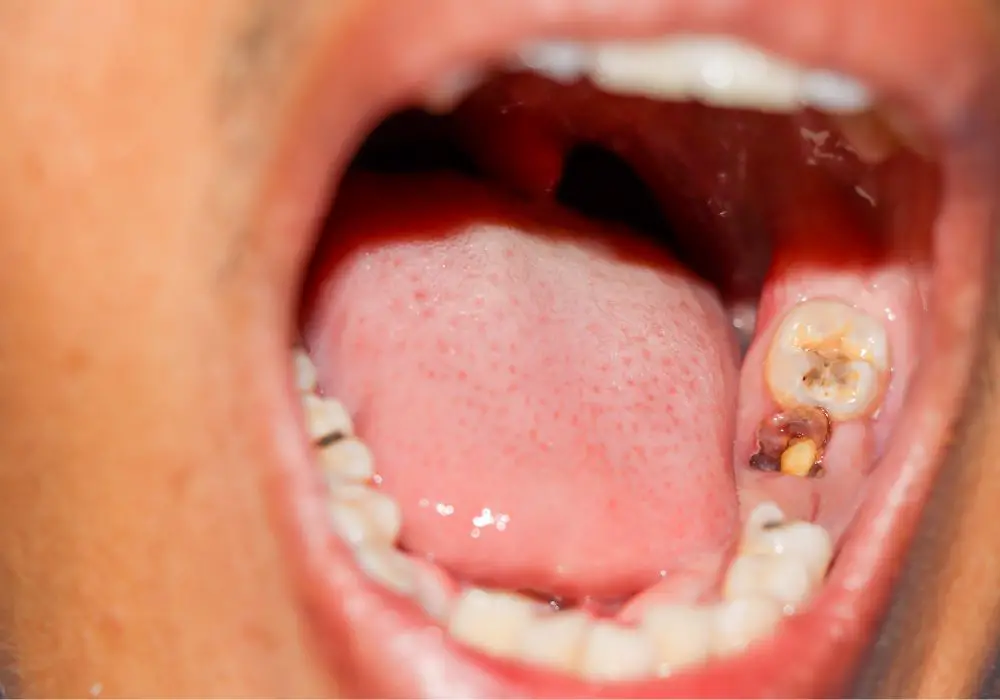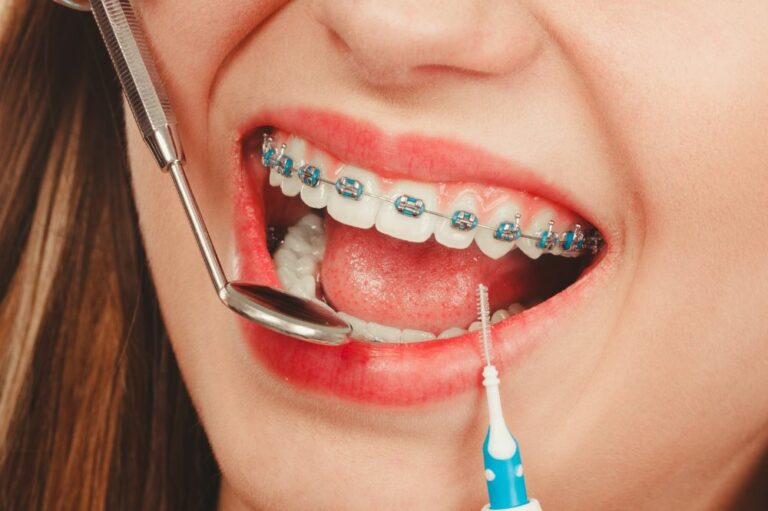Do you know the difference between a cavity and tooth decay? Cavities and tooth decay are two terms that are often used interchangeably, but they actually refer to different things. Understanding the difference between the two can help you take better care of your teeth and prevent serious dental problems down the line.
Tooth decay is a process that occurs over time, as bacteria in your mouth produce acid that eats away at the enamel on your teeth. If left untreated, this decay can eventually lead to cavities, which are small holes or openings in the surface of the tooth. While tooth decay can be difficult to detect in its early stages, cavities are usually more noticeable and can cause pain or sensitivity. So, how can you tell if you have a cavity or tooth decay?
In this article, we’ll explore the differences between cavities and tooth decay, and provide some tips for identifying and treating these common dental problems. By learning more about these issues, you can take steps to protect your teeth and maintain good oral health for years to come.
Understanding Tooth Decay
What is Tooth Decay?
Tooth decay, also known as dental caries or cavities, is a common dental problem that affects people of all ages. It is caused by the erosion of the tooth’s enamel, which is the hard, outer layer that protects the tooth. When the enamel is damaged, it can lead to the formation of small holes or cavities in the tooth.
Tooth decay can be a serious problem if left untreated. It can cause pain, infection, and even tooth loss. However, with proper dental care and regular check-ups, tooth decay can be prevented and treated.
Causes of Tooth Decay
Tooth decay is caused by a combination of factors, including:
- Poor oral hygiene: Not brushing and flossing regularly can lead to the buildup of plaque, a sticky film of bacteria that can erode the enamel of the tooth.
- Sugary and acidic foods and drinks: Consuming foods and drinks that are high in sugar and acid can increase the risk of tooth decay. These substances can erode the enamel and create an environment that is favorable to the growth of bacteria.
- Dry mouth: A lack of saliva can lead to the buildup of bacteria in the mouth, which can increase the risk of tooth decay.
- Genetics: Some people may be more prone to tooth decay due to genetic factors.
To prevent tooth decay, it is important to practice good oral hygiene, limit the consumption of sugary and acidic foods and drinks, and visit your dentist regularly for check-ups and cleanings.
Understanding Cavities
What is a Cavity?
A cavity is a hole in the tooth that is caused by tooth decay. Tooth decay happens when bacteria in your mouth produce acid that erodes the tooth’s enamel, which is the hard, protective layer on the outside of the tooth. If left untreated, the decay can progress to the softer layers of the tooth, leading to a cavity.
Cavities are one of the most common dental problems, affecting people of all ages. They can cause pain, sensitivity, and even tooth loss if left untreated.
Causes of Cavities
There are several factors that can contribute to the development of cavities. Some of the most common causes include:
- Poor oral hygiene: Not brushing and flossing regularly can allow bacteria to build up in your mouth, leading to tooth decay and cavities.
- Sugary and acidic foods and drinks: Consuming foods and drinks that are high in sugar and acid can increase the risk of tooth decay and cavities.
- Dry mouth: Saliva helps to neutralize acid in your mouth and wash away food particles, so having a dry mouth can increase the risk of cavities.
- Genetics: Some people are more prone to cavities due to genetic factors that affect the strength of their tooth enamel.
To prevent cavities, it’s important to practice good oral hygiene, limit sugary and acidic foods and drinks, and visit your dentist regularly for check-ups and cleanings. Your dentist may also recommend fluoride treatments or dental sealants to help protect your teeth from decay.
Differences Between Tooth Decay and Cavities

Tooth decay and cavities are often used interchangeably, but they are not the same thing. Tooth decay is the process that leads to the formation of cavities. Understanding the differences between tooth decay and cavities can help you take better care of your teeth and prevent further damage.
Symptoms
Tooth decay can cause a range of symptoms, including sensitivity to hot and cold foods, pain when biting down, and visible pits or holes in your teeth. If you notice any of these symptoms, it’s important to see your dentist as soon as possible.
Cavities, on the other hand, are the physical manifestation of tooth decay. They are the holes or pits that form in your teeth as a result of the decay process. Cavities can be small or large, and they may or may not cause symptoms.
Diagnosis
Diagnosing tooth decay and cavities typically involves a dental exam and X-rays. Your dentist will examine your teeth for signs of decay and use a dental instrument to check for soft spots or pits. X-rays can help your dentist see the extent of the decay and whether it has reached the inner layers of your teeth.
If your dentist finds a cavity, they will recommend treatment to prevent further damage and restore the tooth’s structure. Treatment options may include fillings, crowns, or root canals, depending on the severity of the cavity.
In conclusion, tooth decay and cavities are two related but distinct dental issues. Understanding the differences between the two can help you take better care of your teeth and prevent further damage. If you suspect you have tooth decay or a cavity, make an appointment with your dentist as soon as possible to get the treatment you need.
Prevention and Treatment
Preventing Tooth Decay and Cavities
Prevention is the best way to avoid tooth decay and cavities. Here are some tips to help you prevent them:
- Brush your teeth twice a day with fluoride toothpaste
- Floss daily to remove plaque and food particles from between your teeth
- Limit sugary and acidic foods and drinks
- Drink plenty of water
- Visit your dentist regularly for check-ups and cleanings
Treatment Options
If you do develop a cavity or tooth decay, there are several treatment options available:
- Fillings: This is the most common treatment for cavities. Your dentist will remove the decayed portion of the tooth and fill the hole with a material such as silver, gold, or a tooth-colored composite resin.
- Crowns: If the decay is extensive and has damaged a large portion of the tooth, your dentist may recommend a crown. A crown is a cap that covers the entire tooth and is made of porcelain, metal, or a combination of the two.
- Root canal: If the decay has reached the pulp of the tooth, a root canal may be necessary. During this procedure, your dentist will remove the infected pulp and replace it with a filling.
- Extraction: In severe cases where the tooth cannot be saved, your dentist may recommend extraction. This involves removing the entire tooth from the socket.
Remember, prevention is key to avoiding tooth decay and cavities. By following good oral hygiene habits and visiting your dentist regularly, you can keep your teeth healthy and avoid the need for more extensive treatment options.
Frequently Asked Questions

What are the symptoms of tooth decay?
Tooth decay can cause a range of symptoms, including tooth sensitivity, pain when eating or drinking, visible holes or pits in the teeth, and bad breath. In some cases, you may not experience any symptoms until the decay has progressed to a more advanced stage.
How can you tell if you have a cavity?
Your dentist can usually detect a cavity during a routine dental exam. However, some common signs of a cavity include tooth sensitivity, pain when biting down, visible holes or pits in the teeth, and discoloration or dark spots on the tooth surface.
What is the difference between a cavity and tooth decay?
Tooth decay is a progressive disease that occurs when the tooth enamel is compromised and exposed to harmful oral bacteria. A cavity is the hole that forms in the tooth as the decay works its way through the tooth structure. In other words, tooth decay is the process that leads to a cavity.
What are the treatments for tooth decay?
The treatment for tooth decay depends on the severity of the decay. In the early stages, your dentist may recommend fluoride treatments or dental sealants to help strengthen the tooth enamel and prevent further decay. More advanced cases may require fillings, root canals, or even tooth extraction.
How long does it take for tooth decay to turn into a cavity?
The length of time it takes for tooth decay to progress to a cavity can vary depending on a range of factors, including your oral hygiene habits, diet, and genetics. In some cases, decay can progress quickly and lead to a cavity within a few months, while in other cases, it may take several years for a cavity to form.
What does a decayed tooth look like?
A decayed tooth may appear discolored or darkened, and may have visible holes or pits in the tooth surface. In some cases, the tooth may feel rough or jagged to the touch. If you suspect that you have a decayed tooth, it’s important to see your dentist right away to prevent further damage or infection.







